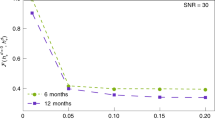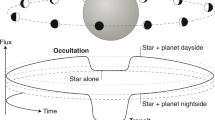Abstract
This year marks the 60th anniversary of the commissioning of the 250-ft telescope at Jodrell Bank Observatory, and the 50th anniversary of the discovery of pulsars at Cambridge. Both events resulted in enduring astronomical researches that have become intimately entwined, and here we celebrate them with a brief historical account of their relationship. We describe how the completion of the telescope in October 1957 coincided with the launch of Sputnik 1 at the start of the space race, a timely circumstance that was the financial saviour of Bernard Lovell’s ambitious project. The telescope established a vital role in space tracking and, by the time that pulsars were discovered a decade later, was supported by an infrastructure that allowed their prompt, successful observation. Technical innovations to both the telescope and its receivers since then have continued to make it a superb tool for world-leading pulsar investigations and the study of the radio Universe.
This is a preview of subscription content, access via your institution
Access options
Access Nature and 54 other Nature Portfolio journals
Get Nature+, our best-value online-access subscription
$29.99 / 30 days
cancel any time
Subscribe to this journal
Receive 12 digital issues and online access to articles
$119.00 per year
only $9.92 per issue
Buy this article
- Purchase on Springer Link
- Instant access to full article PDF
Prices may be subject to local taxes which are calculated during checkout

Manchester Daily Express / SSPL / Getty Images.

Ian Morison, University of Manchester, Jodrell Bank Observatory.

reproduced from ref. 23, Oxford Univ. Press.

Similar content being viewed by others
References
Lovell, B. The Story of Jodrell Bank (Oxford Univ. Press, Oxford, 1968).
Lovell, A. C. B. The Jodrell Bank Radio Telescope. Nature 180, 60–62 (1957).
Ponsonby, J. E. B., Thomson, J. H. & Imrie, K. S. Radar observations of Venus and a determination of the astronomical unit, 1962. Mon. Not. R. Astron. Soc. 128, 1 (1964).
Davies, R. D., Booth, R. S. & Wilson, A. J. Interstellar magnetic fields determined from Zeeman effect measurements. Nature 220, 1207–1210 (1968).
Minchin, R. et al. A dark hydrogen cloud in the Virgo cluster. Astrophys. J. Lett. 622, L21–L24 (2005).
Allen, L. R. et al. Observations of 384 radio sources at a frequency of 158 Mc/s with a long baseline interferometer. Mon. Not. R. Astron. Soc. 124, 477–499 (1962).
Schmidt, M. 3C 273: a star-like object with large red-shift. Nature 197, 1040 (1963).
Miley, G. K., Rickett, B. J. & Gent, H. Angular measurements of the structure of 3C 446 and other quasars with high red-shifts. Nature 216, 974–976 (1967).
Hazard, C., Mackey, M. B. & Shimmins, A. J. Investigation of the radio source 3C 273 by the method of lunar occultations. Nature 197, 1037–1039 (1963).
Lyne, A. G. A study of the lunar occultations of eleven radio sources. Mon. Not. R. Astron. Soc. 158, 431–462 (1972).
Haslam, C. G. T., Stoffel, H., Salter, C. J. & Wilson, W. E. A 408 MHz all-sky continuum survey. II - The atlas of contour maps. Astron. Astrophys. Supp. 47, 1–143 (1982).
Hewish, A., Bell, S. J., Pilkington, J. D. H., Scott, P. F. & Collins, R. A. Observation of a rapidly pulsating radio source. Nature 217, 709–713 (1968).
Davies, J. G., Horton, P. W., Lyne, A. G., Rickett, B. J. & Smith, F. G. Pulsating radio source at α=19h19m, δ=+22°. Nature 217, 910–913 (1968).
Pilkington, J. D. H., Hewish, A., Bell, S. J. & Cole, T. W. Observations of some further pulsed radio sources. Nature 218, 126–129 (1968).
Lyne, A. G. & Smith, F. G. Linear polarization in pulsating radio sources. Nature 218, 124–126 (1968).
Smith, F. G. Measurement of the interstellar magnetic field. Nature 218, 325–326 (1968).
Lyne, A. G. & Rickett, B. J. Measurements of the pulse shape and spectra of the pulsating radio sources. Nature 218, 326–330 (1968).
Davies, J. G. & Large, M. I. A single-pulse search for pulsars. Mon. Not. R. Astron. Soc. 149, 301–310 (1970).
Davies, J. G., Large, M. I. & Pickwick, A. C. Five new pulsars. Nature 227, 1123–1124 (1970).
de Jager, G., Lyne, A. G., Pointon, L. & Ponsonby, J. E. B. Measurement of the distance of pulsar CP0328. Nature 220, 128–129 (1968).
Lovell, B. The Jodrell Bank Telescopes (Oxford Univ. Press, New York, 1985).
Walsh, D., Carswell, R. F. & Weymann, R. J. 0957+561 A, B — Twin quasistellar objects or gravitational lens. Nature 279, 381–384 (1979).
Lyne, A. G., Anderson, B. & Salter, M. J. The proper motions of 26 Pulsars. Mon. Not. R. Astron. Soc. 201, 503–520 (1982).
Morison, M. & Jordan, C. A. In Proc. 11th Eur. Freq. Time Forum 355–358 (1997); http://www.eftf.org/proceedings/proceedingsEFTF1997.pdf
Backer, D. C., Kulkarni, S. R., Heiles, C., Davis, M. M. & Goss, W. M. A millisecond pulsar. Nature 300, 615–618 (1982).
Lyne, A. G. et al. The discovery of a millisecond pulsar in the globular cluster M28. Nature 328, 399–401 (1987).
Lyne, A. G., Biggs, J. D., Brinklow, A., Ashworth, M. & McKenna, J. Discovery of a binary millisecond pulsar in the globular cluster M4. Nature 332, 45–47 (1988).
Clifton, T. R., Lyne, A. G., Jones, A. W., McKenna, J. & Ashworth, M. A high frequency survey of the Galactic plane for young and distant pulsars. Mon. Not. R. Astron. Soc. 254, 177–184 (1992).
Lyne, A. G. et al. The Parkes southern pulsar survey — II. Final results and population analysis. Mon. Not. R. Astron. Soc. 295, 743–755 (1998).
Manchester, R. N. et al. The Parkes multi-beam pulsar survey — I. Observing and data analysis systems, discovery and timing of 100 pulsars. Mon. Not. R. Astron. Soc. 328, 17–35 (2001).
Muxlow, T. W. B. et al. High-resolution studies of radio sources in the Hubble deep and flanking fields. Mon. Not. R. Astron. Soc. 358, 1159–1194 (2005).
Davies, J. G., Anderson, B. & Morison, I. The Jodrell Bank radio-linked interferometer network. Nature 288, 64–66 (1980).
McDonald, A. R. et al. Global very long-baseline interferometry observations of compact radio sources in M82. Mon. Not. R. Astron. Soc. 322, 100–106 (2001).
Morison, I. SETI in the new millennium. Astron. Geophys. 47, 4.12–4.16 (2006).
Lyne, A. G. et al. 45 years of rotation of the Crab pulsar. Mon. Not. R. Astron. Soc. 446, 857–864 (2015).
Kramer, M., Lyne, A. G., O’Brien, J. T., Jordan, C. A. & Lorimer, D. R. A periodically active pulsar giving insight into magnetospheric physics. Science 312, 549–551 (2006).
Lyne, A., Hobbs, G., Kramer, M., Stairs, I. & Stappers, B. Switched magnetospheric regulation of pulsar spin-down. Science 329, 408–412 (2010).
Author information
Authors and Affiliations
Corresponding author
Ethics declarations
Competing interests
The authors declare no competing financial interests.
Additional information
Publisher’s note: Springer Nature remains neutral with regard to jurisdictional claims in published maps and institutional affiliations.
Rights and permissions
About this article
Cite this article
Lyne, A., Morison, I. The Lovell Telescope and its role in pulsar astronomy. Nat Astron 1, 835–840 (2017). https://doi.org/10.1038/s41550-017-0292-0
Received:
Accepted:
Published:
Issue Date:
DOI: https://doi.org/10.1038/s41550-017-0292-0



